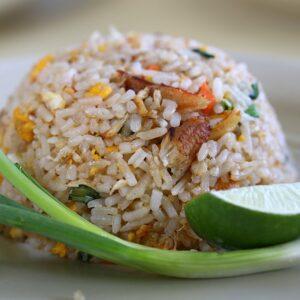Diet Plans For Weight Loss And Achieving Your Results Fast
How to lose weight fast? You might be thinking of such question yourself. However, the truth is not always so easy to figure out which diet will work best for you and your lifestyle. It can be frustrating to try programs that don’t work or worse yet don’t agree with your digestive system.
There are a lot of information in this world. And it can often seem overwhelming when trying to find the right information in order to make decisions about our health and wellness.
One way we can overcome this problem is by reading articles. That have already been written by people who have gone through the same thing we are going through. They’ve struggled with losing weight and know what works for them personally. This post will give you some information on how to make good decision about what program might be best for you.
Low Carb Diet
“Is a low-carb diet healthy?” That is the first issue that people raise. Many dieticians in the 1990s felt that all fats were unhealthy for you and that eliminating them out entirely would help you lose weight. Then studies started to show that low-carb diets promote weight loss more effectively than low-fat diets.
Low carb dieting has been shown to help with weight loss. The low carb diet consists of limiting carbohydrate intake to only 20-150 grams per day. As carbohydrates are the body’s primary fuel source, restricting carbs restricts the body’s ability to turn the food consumed into energy.
Lose Weight With Less Effort
Many people are trying to find different ways to lose weight. They are looking for something that will allow them to do so in a less effort way. The low carb diet is an approach that has been proposed by many doctors and nutritionists for this goal.
The low carb diet starts with the idea of removing sugar, grains, legumes, potatoes, starchy vegetables and any other foods that elevate blood sugar. Instead of these foods, you are encouraged to eat more protein-rich foods like beef or fish. Along with bacon or sausage where you are not allergic. If you are allergic then it is best for you to avoid these meats altogether. You can also eat eggs, cheeses and yogurt as well as leafy green vegetables like spinach or kale if they suit your taste buds.
Keto Diet and How it Helps
The Keto diet or Ketogenic diet is a high-fat, low-carbohydrate and protein diet. For many people, it can be a healthy and effective way to lose weight and improve health.
The Keto diet is considered a low carb diet because it limits carbohydrate intake. The goal of the Keto Diet is to force your body to burn fat for energy instead of carbohydrates. The Keto Diet also limits protein intake because when you consume excess protein. Your body will convert that into glucose in order to use it for energy. It’s best to eat around 65% of calories from fat, 30% from carbs and 5% from proteins on this plan. Learn more about Keto Diet
Avoid Common Mistakes
Ketogenic dieting and the common mistakes that people make when they start a Keto diet are as follow:
#1: Eating Too Many Carbs
#2: Eating Too Much Protein
#3: Not Eating Enough Fat
#4: Doing CrossFit on Keto
Vegan Diets
Vegetarianism is a form of diet in which people eat only plants. This way of eating is called veganism when people exclude all animal products.
A vegetarian diet is often viewed as healthier than an omnivorous (meat-eating) diet because of the lack of saturated fats. Which are more abundant in meat and animal products. A vegetarian or vegan diet may be better for the environment too since it has less greenhouse gas emissions than an omnivorous one.
People choose to eat vegetarian or vegan diets for many reasons, including religious ones (Hinduism or Buddhism), ethical ones (concern for animal welfare), and health-related ones (obesity).
Therefore, vegan diets can be effective for losing weight. With a vegan diet, it is easier to meet the goals of a calorie-restricted diet since it eliminates many unhealthy animal fats and processed sugars. This type of diet also encourages a variety of vegetables and fruits which provide an increased amount of nutrients and fiber.








